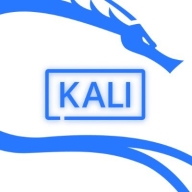

Find out in this report how the two AWS Marketplace solutions compare in terms of features, pricing, service and support, easy of deployment, and ROI.


Kali Linux is widely used by organizations for penetration testing, vulnerability assessments, web application security, network audits, ethical hacking, and open-source intelligence, providing extensive free features.
Organizations run Kali Linux in virtualized environments alongside other operating systems, employing tools for automated scans, malware identification, infrastructure testing, and application development or hosting. These users benefit from lower maintenance requirements and a smaller footprint. The toolset includes Nmap, SQLMap, Metasploit, and Hydra, ensuring effective security assessments. Its high scalability, performance, user-friendly interface, and extensive documentation enhance the platform's usability. Known for stability, flexibility, and virus resistance, Kali Linux supports web security, troubleshooting, and configuration tasks comprehensively.
What are the most important features of Kali Linux?Kali Linux can support industries in improving security through stable and flexible environments that resist viruses and provide extensive documentation. Users employ it for web security, troubleshooting, and configuring capabilities. Necessary improvements include automation, user-friendliness, and integrating AI and blockchain. Enhancements in security features, faster installations, and better learning tools are also essential. Machine learning integration and non-enterprise user functionalities can address current limitations.
Kubecost provides real-time cost visibility and insights for teams using Kubernetes, helping you continuously reduce your cloud costs.
Breakdown costs by any Kubernetes concepts, including deployment, service, namespace label, and more. View costs across multiple clusters in a single view or via a single API endpoint.
Receive dynamic recommendations for reducing spend without sacrificing performance. Prioritize key infrastructure or application changes for improving resource efficiency and reliability.
Quickly catch cost overruns and infrastructure outage risks before they become a problem with real-time notifications. Preserve engineering workflows by integrating with tools like Microsoft Teams and Slack.
We monitor all AWS Marketplace reviews to prevent fraudulent reviews and keep review quality high. We do not post reviews by company employees or direct competitors. We validate each review for authenticity via cross-reference with LinkedIn, and personal follow-up with the reviewer when necessary.